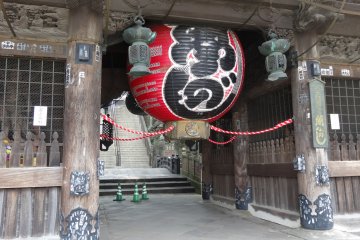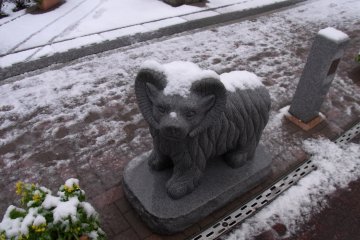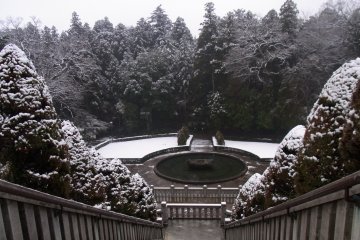Temples, gardens, gift shops, Japanese traditional restaurants – all these are only minutes away from Narita International Airport.
Narita-san, meaning Narita mountain, has more to offer than just a place to hang out and kill your time during your transit. It is a place to be entertained and enlightened.
Narita-san Shinsho-ji Temple is one of the highlights in visiting Narita and definitely a must-see. As the name implies, the temple is located on the top of the hill. It is a Shingon Buddhist temple located in central Narita. It was founded in 940, by the great monk, Kancho-sojo. It a lead temple in the Chisan branch. The present main temple was rebuilt in 1967. The temple is one of the best-known in the Kanto region. The temple known as "Ofudo-sama (Fudo-myoo, the God of Fire) of Narita" is loved and worshipped. It has become one of the major spiritual places of worship in Japan.
Behind the main temple building is Narita-san park. It was opened in 1928 and covers an area of 165,000 sq. meters. The place is famous for flower viewing with plum trees and cherry blossoms bloom in the spring. They hold Japanese Ume plum tree festival from the end of February until the beginning of March. An open-air tea ceremony is on for visitors to experience Japanese traditional culture.
Take a stroll along the Omotesando street, about one kilometer path leading to the Shinsho-ji temple from the railway station. The street is lined with restaurants and stores, selling traditional crafts and local specialties like Yokan sweets, Tsukudani pickles and souvenirs.
Narita is also a home of good quality unagi eel. Unagi is their specialty at Narita city. Alongside the front approach to Shinsho-ji temple has a number of unagi restaurants operated by local families. They are hospitable and welcome you with a cup of tea.
Narita is full of events and activities throughout the year. Narita-san scores one of the highest number of visitors during the New Year period. Other annual festivals are Setsubun start of Spring festival in February, the taiko drum festival in April, firelight performances of Noh plays in May, the Gion Festival in July, Obon in August, Shichigosan in November; and the annual burning of amulets in late December.
The temple and the surrounding Omotesando street is packed with crowds during the festive season. The rest of the year it remains more peaceful.
The Narita-san Shinsho-ji is only 10min. walk from JR or Keisei Narita Station. Narita Station is about 10 minutes train ride from the Narita Airport terminal 2.









